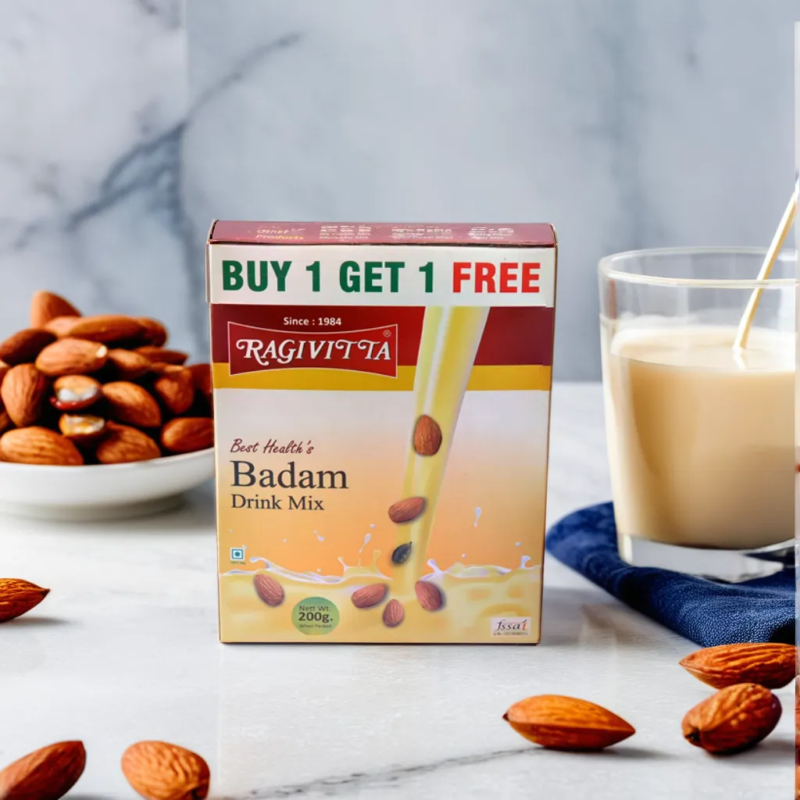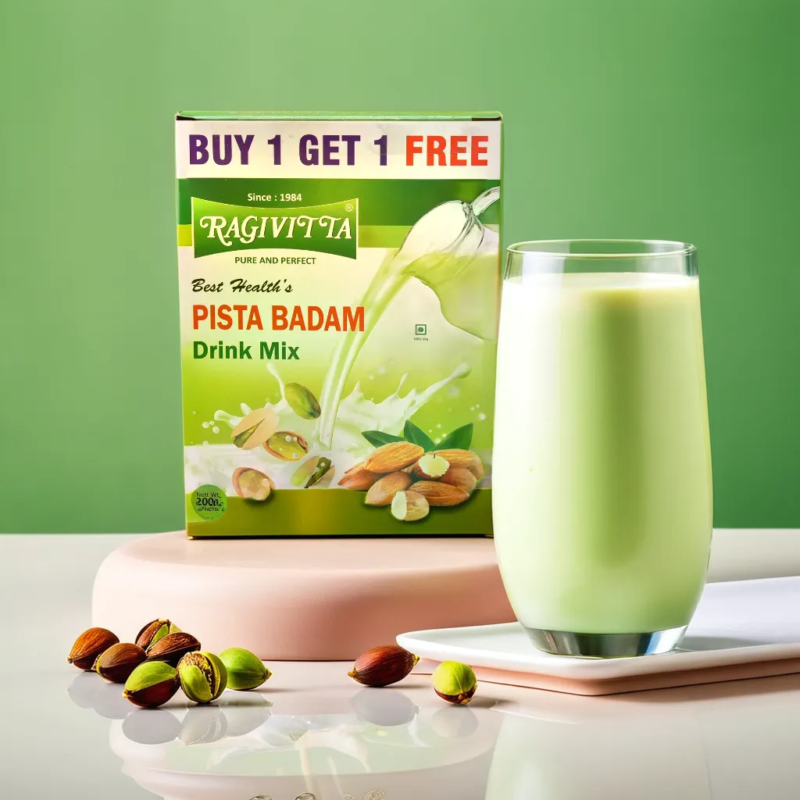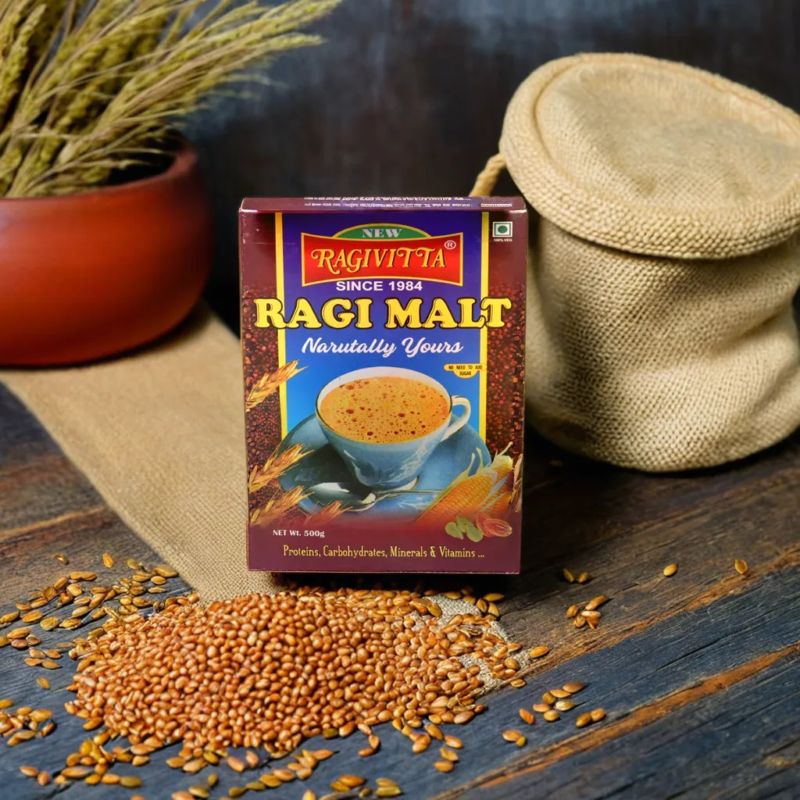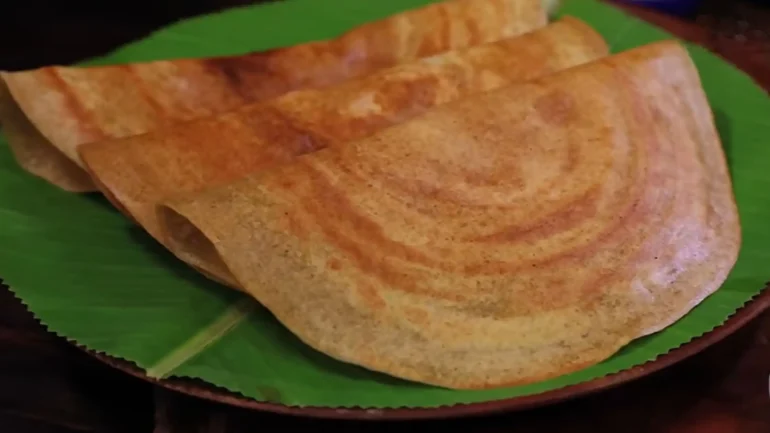What is Kodo Millet?
Tamil - Varagu ; Hindi - Koden/Kodra ; Kannada - Harka ; Malyalam - Koovaragu ; Telugu - Arikelu;
Kodo Millet, scientifically known as Paspalum scrobiculatum, has been a dietary staple in many cultures for centuries. Packed with essential nutrients, this gluten-free grain is a boon for those seeking a wholesome diet.
Originating from the Himalayas, Kodo millet has been a staple in Northern India for centuries, boasting a rich history that spans over 3000 years. This resilient grain has adapted to harsh conditions, thriving as a pest-resistant crop that demands minimal pesticides. Its versatility shines through, easily cultivated during both the Rabi and Kharif seasons.
The benefits of Kodo millet are boundless. With higher iron levels, it aids in combating anaemia; its abundance of protein and fibre renders it ideal for diabetes management. Additionally, it acts as a blood purifier, supports kidney function, boosts the immune system, and contributes to heart muscle strength.
Kodo Millet Nutritional Value Per 100g
According to ijcmas, let’s see the Kodo millet nutritional value per 100g:
| Nutrients | Value per 100g |
|---|---|
| Protein | 10.6 gm |
| Fat | 4.2 gm |
| Fibre | 10.2 gm |
| Ash | 2.95 gm |
| Calorific value | 346 kcal |
| Carbohydrate | 59.2 gm |
| Minerals | 4.4 gm |
| Calcium | 27 mg |
| Phosphorus | 188 mg |
| Iron | 0.5 mg |
| Riboflavin | 0.09 mg |
| Niacin | 2.0 mg |
Benefits Of Kodo Millet
Kodo millet emerges as a nutritional powerhouse with myriad advantages. Rich in iron, it combats anaemia, while its high protein and fibre content deems it ideal for diabetics. Acting as a blood purifier, it supports kidney function, strengthens the immune system, and promotes heart muscle health.
Discover the holistic well-being offered by Kodo millet. Here are some of the detailed Kodo Millet benefits;
1. Improves Kidney Health
With its lower potassium levels, heightened fibre content, and reduced uric acid formation, Kodo millet steps in as a helpful aid for kidney disorders. Packed with antioxidants and flavonoids, it contributes to blood purification and acts as a preventive measure against stone formation in the gall bladder and kidneys.
2. Keeps Heart Healthy
Packed with all these fancy-sounding phytochemicals—like phytic acid for kicking cholesterol to the curb and phytate for keeping cancer risks at bay—Kodo millet is a heart’s best friend! With its team of potassium, magnesium, and prebiotic fibre, it’s like a superhero squad fighting off heart attacks, atherosclerosis, and a bunch of pesky chronic diseases.
3. Controls Diabetes
Kodo millet is good for diabetes. These millets are low in sugar content and have polyphenols. Both of these help reduce blood glucose levels. A study conducted in 2022 by Han et al. states that Kodo millets help control type 2 diabetes.
Kodo-dependent dishes like Kodo idly and upma have a 60% lower glycemic index, making them an ideal substitute for cooking diabetic-friendly dishes.
4. Helps in Weight Loss
Research has shown that Kodo millets have a higher polyphenol content, which prevents obesity. This millet isn’t just a superhero for your heart; it’s also got your back in the battle against weight gain!
This magic grain helps keep fat away from those adipose tissues and kicks inflammation to the curb. Plus, with its low Glycemic index and heaps of fibre, it’s like your secret weapon for managing those pesky pounds.
5. Makes Gut-healthy
The high fibre content in Kodo millets aids in the elimination of diseases such as constipation, excessive gas, bloating, and cramps. It helps in the growth of healthy bacteria, which are essential for proper digestion.
6. Reduce Cancer Initiation and Progression
Literature studies have supported the use of Kodo millets and reduced risk of cancers. These millets may potentially reduce cancer initiation and progression. This anti-cancer effect is attributed to the presence of phenolic acids, phytic acids and tannins in the grain.
This indicates that these millet may reduce the risk of certain cancers. However, we need more scientific evidence to support these claims
7. Anti-ageing and healing
The presence of antioxidants and polyphenols in Kodo millets helps fight free radicals and has cell repair functions. Using these millet flour paste on cuts and wounds is a traditional remedy to heal them.
Ways to Incorporate Kodo Millets in Your Diet
Here’s how you can make the most of Kodo millets:
- Rice Replacement: Swap out rice for Kodo millet in dishes like Pongal, biryani, or pulao. Their high fibre, protein, and antioxidants can aid in regulating blood sugar and cholesterol levels.
- Gluten-Free Goodies: Grind this millet into flour for gluten-free chapatis, bread, cakes, and muffins. This flour also stars in traditional treats like pudding, kheer, and halwa.
- Nutrient Boost: Amp up the nutrition of your idli or dosa batter by adding these millets. Fermented Kodo millets make for delicious dosas or uttapams.
- Healthy Porridge: Cook these millets with water or milk for a wholesome porridge or kanji. Enhance it with spices, nuts, fruits, or sweeteners for added flavour. This porridge helps with colon hydration and preventing constipation.
- Medicinal Uses: Harness the anti-inflammatory, antibacterial, and anti-allergic properties of these millets. Traditionally used to address diabetes, general weakness, wounds, inflammation, and bleeding, they’re also beneficial for postmenopausal women dealing with cardiovascular issues.
Enhancing Nutrition with Kodo Millet
An often overlooked aspect when soaking Kodo millet is the misunderstanding around its water-soluble minerals.
Upon soaking, these minerals diffuse into the water, often tinting it red or muddy. However, a common mistake is rinsing the millet excessively to remove this colouration, inadvertently discarding essential minerals and antioxidants.
Here’s the proper method for cleaning and soaking Kodo millet to maximize its nutritional value:
- Begin by rinsing the millet in plain water to eliminate any residual grit or dust.
- Submerge this millet in drinkable water for 6 to 8 hours.
- Crucially, refrain from discarding the millet water; instead, utilize it in your cooking.
By following these steps, you ensure a nutrient-rich Kodo millet experience. With the groundwork laid, let’s venture into exciting recipes that harness the diverse benefits of this millet.
Kodo Millet Recipes to Try
Kodo Millet Dosa
This breakfast superstar is all about Kodo millet, the gluten-free, protein-packed hero grain. Think of it as the cool cousin of the regular rice dosa but with extra nutritional oomph and a delightful nutty taste. Super simple to whip up and a perfect match with sambar, chutney, or podi!
Ingredients
- 1 cup kodo millet
- 1/4 cup urad dal (split black gram)
- 1/4 teaspoon fenugreek seeds
- Salt to taste
- Oil for greasing the pan
Instructions
- Get that Kodo millet, urad dal, and fenugreek seeds into a water bath for a cosy soak—let ’em chill for 4 to 6 hours.
- Drain the water and give those soaked goodies a spin in the blender till it’s all smooth and thick. Salt it up and mix like you mean it!
- Pop that batter into a big bowl, cover it up like a sleepy blanket, and let it ferment in a warm spot for 8 to 10 hours (or simply let it snooze overnight).
- Once it’s done fermenting, wake up the batter with a good stir and add water if it’s getting too serious. It should be a little thinner than idli batter but not too much of a runner.
- Now, heat a non-stick pan or a cast-iron griddle on medium-high heat, and give it a light oil massage.
- Time to pour that batter onto the pan and spread it around in circles like a pro to make a thin, perfect dosa.
- A little oil around the edges, and let the dosa party start! Cook until it’s golden and crispy underneath—it usually takes about 2 to 3 minutes.
- Flip it over for a minute or until it’s cooked through and through.
- Fold it up and plate it for your grand Kodo millet dosa feast! Enjoy the yumminess.
Kodo Millet Khichdi
Kodo millet khichdi is a wholesome one-pot meal packed with kodo millet, lentils, and a medley of vegetables. Known for its gluten-free and protein-rich nature, this millet brings a range of health perks to the table, from regulating blood sugar and cholesterol levels to enhancing digestion and bolstering immunity. this millet khichdi is easy to make and can be enjoyed with yoghurt, pickle, or papad.
Ingredients
- 1 cup Kodo millet, soaked for 2 hours and drained
- 1/4 cup split yellow moong dal, washed and drained
- 1/4 cup split pigeon pea (arhar dal), washed and drained
- 2 cups mixed vegetables, chopped (you can use carrots, beans, peas, potatoes, cauliflower, etc.)
- 1 onion, finely chopped
- 1 tomato, finely chopped
- 2 green chillies, slit
- 1 teaspoon ginger-garlic paste
- 1/4 teaspoon turmeric powder
- 1/2 teaspoon red chilli powder
- 1/2 teaspoon coriander powder
- 1/2 teaspoon garam masala
- Salt to taste
- 2 tablespoons ghee
- 1 teaspoon cumin seeds
- 2 cloves
- 2 cardamoms
- 1 bay leaf
- 4 cups water
- Coriander leaves, chopped, for garnishing
Instructions
- Get your pressure cooker party started by heating some ghee on medium-high heat. Toss in cumin seeds, cloves, cardamoms, and that cool bay leaf. Once they start crackling, add onion, green chillies, and ginger-garlic paste. Saute till that onion gets all golden and cosy.
- Add tomato, red chilli powder, turmeric powder, coriander powder, garam masala, and add salt. Cook until that tomato goes all soft and mushy.
- Now, toss in the main stars: Kodo millet, moong dal, arhar dal, and your mix of veggies. Give it all a good mix and saute for a little bit.
- Pour in the water and get it bubbling. Seal the deal by closing that lid and pressure cooking for 3 to 4 whistles until everything’s nice and soft.
- Let the pressure do its thing. Once it’s all chill, open up and fluff that khichdi with a fork. Top it off with some coriander leaves for a fancy touch.
- Serve it piping hot with a sidekick of yoghurt, pickle, or some crunchy papad. Enjoy the flavorful feast!
Kodo Millet Upma
Kodo millet upma stands as a savoury breakfast delight crafted from gluten-free and protein-packed Kodo millet. It’s a simple dish that allows for customization with preferred vegetables and spices. Starting your day with this millet upma promises a nutritious and hearty kick-off to fuel your morning.
Ingredients
- 1 cup Kodo millet, rinsed and soaked for 30 minutes
- 2 tablespoons oil
- 1 teaspoon mustard seeds
- A few curry leaves
- 1 onion, finely chopped
- 2 green chillies, slit
- 1/4 teaspoon turmeric powder
- Salt to taste
- 2 cups water
- 1/4 cup roasted peanuts
- 2 tablespoons chopped coriander leaves
Instructions
- Get that oil sizzling in your pressure cooker on medium-high heat. Toss in mustard seeds and curry leaves, and brace yourself for the splutter show!
- Add onion and green chillies. Sauté them until that onion goes all golden and fabulous.
- Add some turmeric powder and a sprinkle of salt, mixing it all in like a pro.
- Now, introduce the soaked millet to the pressure cooker party and sauté it for a little while.
- Pour in the water and let the excitement bubble up. Close the lid and cook for 3 whistles or until that kodo millet transforms into a fluffy cloud of deliciousness.
- Open the lid and give that upma a fluff with a fork. Toss in some roasted peanuts and coriander leaves, mixing it all like a culinary maestro.
- Serve it hot with a sidekick of coconut chutney or your favourite pickle. Enjoy the flavorful feast!
Side Effects of Kodo Millet
While Kodo millet offers a plethora of health perks, it’s crucial to grasp its potential downsides. Here’s a rundown of possible drawbacks:
1. Can Causes Allergic Reactions
Some individuals might have allergies to components like gluten, oxalates, or cyclopiazonic acid present in Kodo millet. Symptoms can range from mild itching to severe reactions like swelling, breathing issues, or anaphylaxis. Seeking immediate medical attention for any such reactions is vital.
2. Can Causes Digestive Issues
The high fibre content in Kodo millet can promote bowel health but excessive intake may lead to bloating, gas, cramps, or changes in bowel movements. Gradually increasing fibre intake and ensuring ample water consumption can mitigate these concerns.
3. Antinutrient content
Kodo millet contains antinutrients like phytic acid and tannins that could hinder mineral absorption and enzyme activity. Soaking, sprouting, or fermenting the millet before cooking can help reduce these antinutrients.
4. Gluten concerns
Though naturally gluten-free, cross-contamination during processing might affect Kodo millet, making it crucial for those with gluten-related disorders to opt for certified gluten-free products.
5. Medication interactions
Kodo millet might interfere with medications like antidiabetic drugs, anticoagulants, or thyroid hormones, affecting their effectiveness or safety. Consulting a doctor before consumption, especially if on medication, is advisable.
Being aware of these possible side effects doesn’t mean steering clear of Kodo millet entirely. It’s a nutritious and delectable grain that offers many benefits when consumed moderately as part of a balanced diet. Simply follow the mentioned tips to minimize risks and maximize its advantages.
FAQS: Kodo Millet
What is Kodo millet called in India?
Kodo millet goes by various names like finger millet, cow grass, rice grass, ditch millet, Native Paspalum, or Indian Crown Grass. In Hindi, it’s known as Kodo dhana, Varagu in Tamil, Arikalu in Telugu, Harka in Kannada, and Kodro in Gujarat.
Are Kodo and Ragi the same?
No, Kodo and Ragi belong to different millet varieties. Both pack a punch in terms of nutrients and are hailed as superfoods. While their benefits align, incorporating both in one’s diet adds variety in taste and nutritional intake.
Can Kodo Millet be consumed daily?
Yes, absolutely. Although Kodo millets contain anti-nutrients like phytic acid and polyphenols, processing methods such as soaking aid in reducing their levels, ensuring better nutrient availability.
Is Kodo millet easy to digest?
Indeed, Kodo millet, being rich in fibre, soluble minerals, and gluten-free, is easily digestible. Its nutritional components—fibre, iron, protein, and low phosphorus—offer substantial benefits for heart, liver, kidney, and gut health.
How long should Kodo millet be soaked?
Soaking Kodo millet for 6 to 8 hours maximizes its benefits. Phytic acid, present in this millet, is released into the water during soaking, inhibiting rapid nutrient absorption. Soaking is vital! However, if time is limited, a soak in warm water for at least 30 to 40 minutes suffices.







